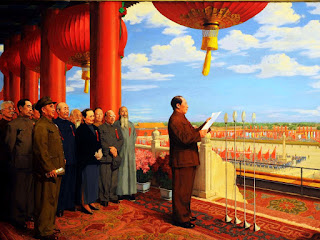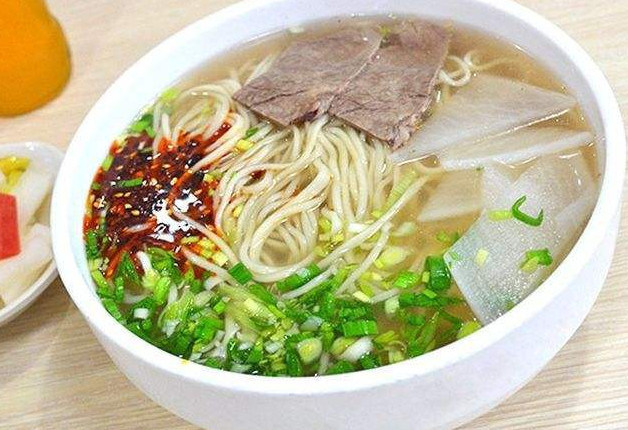Ultimate Guide to Dunhuang Travel
Located at the westernmost part of the Hexi Corridor with Sanwei Mountain in the east, Mingsha Mountain in the south, desert in the west, and Taklimakan desert in the west, Dunhuang is a hub city connecting central China and the far western regions of Xinjiang. Since the opening of the ancient Silk Road, Dunhuang has been a city of key position in communications between central China and western areas. Now, it becomes one of the famous destinations for people seeking Silk Road experiences.
 |
| Amazing Dunhuang |
5 Strong Reasons for You to Visit Dunhuang
- Spectacular Gobi Desert and Oasis Scenery - Echoing Sand Mountain and Crescent Lake
Have you ever enjoyed the spectacular sunset in the desert? Have you listened to the whisper of sand? Have you ridden an actual camel in the sand? You can do all those things in Echoing Sand Mountain and Crescent Lake. Just imagine riding a camel and march forward in the ever-singing desert with the sunset showering all around. What a beautiful scene! |
| Magnificent Desert View |
- Awe-inspiring Thousand-Year-Old Frescoes - Mogao Caves
As a sacred place for Buddhism, Mogao Caves are the largest and the richest Buddhist treasure house in the world. The vivid frescoes and Buddha statues will take you back to a thousand years ago and give you a glimpse of what Dunhuang was like in old times. Prepare to be amazed. |
| Beautiful Fresco inside Mogao Caves |
- Grotesque Landform - Yardang National Geopark
Yardang National Geopark is famous for the unique Yardang landform caused by tens of thousands of years of wind abrasion. Everything seems normal in the daytime except that the compass doesn’t work here, but when night falls, the strong wind will scream like thousands of beasts roaring. Therefore, the place is also regarded as the Ghost Town.  |
| Ghost Town |
- Local Delicacies
Unlike other cities you might have traveled in China, Dunhuang is more about Muslim food. Wandering in the hustling and bustling market of Dunhuang, you will be lured by the world-famous Lanzhou Hand-pulled Noodles, Donkey Burger, Shish Kebab, and so much more.  |
| Dunhuang Local Delicacy |
- Camping in the Desert
You may have camped in the forest or on the beach, but have you camped in the desert? Dunhuang is a great place for you to camp in the desert and enjoy the starry sky at night.  |
| Camping in the Desert |
History of Dunhuang
Dunhuang has a long history. The term "敦煌(Dunhuang)" first appeared in "Shiji (Records of the Grand Historian)". “敦” means bigness and "煌" means prosperity. Therefore, the word "Dunhuang" means big and prosperous. The fact is Dunhuang did live up to its name. As a key spot along the Silk Road, Dunhuang was one of the international metropolises in old times connecting central China and central Asia areas.
The ancestors of Dunhuang people lived in the place since the ages of Shun and Yu (4000 years ago). In Xia, Shang and Zhou periods, Qiang and Rong people took residence here. In the Spring and Autumn Period, Dunhuang was called Guazhou (city of melons) for its sweet melon and nomads like Yueshi, Wusun people began to settle. In Qin and Han dynasties, Xiongnu people living far north became powerful and took control of the place, which imposed a serious threat to the central dynasties of China. It was during the reign of Emperor Wu of the Han Dynasty that the powerful Xiongnu was forced back to the north again and Dunhuang was merged into the territory of the central dynasty of China.
Sightseeing in Dunhuang
Situated 25km southeast of Dunhuang city, Mogao Caves are one of the four greatest
 |
| Murals of Mogao Caves |
2.Echoing Sand Mountain and Crescent Lake
Just 5km away from the Dunhuang city lies the work of nature - Echoing Sand Mountain and Crescent Lake. It’s unusual that the desert and lake can exist simultaneously. You can enjoy all kinds of sand activities like riding a camel here.2.Echoing Sand Mountain and Crescent Lake
Ticket: 110 RMB/pax during May - October; 55 RMB/pax during November - April
 |
| Echoing Sand Mountain and Crescent Lake |
- 3.Yardang National Geopark
Located 160km away from Dunhuang downtown, Yardang National Geopark is a representative landform in extremely arid areas. Tens of thousands of years of wind and water eroding the quaternary sediment have created a large quantity of Yardang forms in various shapes. Ticket: 50RMB/pax for entrance ticket; 70RMB/pax for shuttle bus.
 |
| Yardang National GeoPark |
- 4.Han Dynasty Great Wall
First built in 121 B.C (during the reign of Emperor Wu) and completed in 101 B.C, the Han Dynasty Great Wall played an important role in the military defense system of the Han Dynasty. It’s also an epitome of the military defense practice of the Western Han Dynasty in Hexi and the whole northern regions. Wore by the wind and rain for thousands of years, the Han Dynasty Great Wall still stands proudly in the Gobi desert.Ticket: 40 RMB/pax; 50 RMB/pax for shuttle bus.
 |
| Han Dynasty Great Wall |
- 5.Shazhou Night Market
Shazhou Night Market is the largest night market in Dunhuang and a place rich in local specialties and customs. The whole market is divided into local snacks, arts and crafts, tea houses, agricultural products, and local specialties five sections. You can have some local delicacies, sip a cup of tea, appreciate the rare local arts, and be amazed by all kinds of interesting souvenirs. |
| Shazhou Night Market |
- 6.Western Thousand-Buddha Caves
The Western Thousand-Buddha Caves are nearby the Mogao Caves. Most of the caves here were chiseled in Northern Wei Dynasties and only 9 of them are available for visiting. It’s an extension of the Dunhuang Buddhism art system.Ticket: 15 RMB/pax in low seasons; 30 RMB/pax in peak seasons.
 |
| Western Thousand-Buddha Caves |
- 7.Baima Pagoda
In a small village 3km outside Dunhuang, there is a small pagoda named Baima Pagoda. Legend has it that the pagoda was built by a famous Buddhist master Kumarajiva for his horse. Kumarajiva passed Dunhuang on his way back to India after he introduced the Diamond Sutra to China and his horse died here. To commemorate his horse, Kumarajiva built a pagoda and buried his horse in the Buddhism ritual. The whole pagoda is a 9-storey building in 40-feet. On the top of the pagoda, there are 8 aeolian bells making melodious sound when it’s windy. |
| Baima Pagoda |
Dining in Dunhuang
Dunhuang people love noodles and meat, especially chicken, beef, and mutton. Here are 7 local delicacies we recommend.
1.Dunhuang Yellow Noodles
Dunhuang donkey meat is a local specialty. The Dunhuang Yellow Noodles have both the  |
| Dunhuang Yellow Noodles |
2.Braised Lamb Cakes
It’s a delicacy made from boiled mutton and thin floury cakes. The juicy and flavored lamb and the delicious cakes will greatly satisfy your taste bud.3.Dunhuang Noodles
It’s a kind of homemade pasta in Dunhuang, very chewy.4.Mutton Soup
It’s a traditional Dunhuang food made from mutton and bean vermicelli. Having it in cold winter will help to keep warm.
5. Puffy Oil Cake

Roasted Meat
Sweet inside and crispy outside, Puffy Oil Cake is a great choice for a snack. 
Travel Tips
Best Time to Visit Dunhuang: May-June and August - October
Dunhuang has a typically arid continental climate of extreme drought with less rain and a sharp temperature difference between day and night. The annual average temperature is 9.3 degrees. There are often sandstorms in spring, which can greatly affect your travel mood. While in winter, the low temperature and the strong wind also make it hard to actually enjoy the landscapes. Therefore, the best time to visit Dunhuang is summer and autumn, especially in May and October. You can plan your Dunhuang trip for May, June, August, September, and October. Best of all, you can taste a lot of seasonal fruits in early autumn.Tip: If you visit Dunhuang in June, please prepare sun blocking cream, sunglasses, hat, lipsticks, and thin scarves.
Transportation
Like any other tourist cities in China, Dunhuang also has a convenient transportation system, which can take you to wherever you want. However, there is no international flight that can reach Dunhuang, you have to transit from other cities.Airway
Located 13km east from Dunhuang, Dunhuang airport has 38 direct flights every week to and from Beijing, Shanghai, Nanjing, Hangzhou, Xian, Urumqi, Lanzhou, and Jiayuguan. Among them, the flights to and from Xian and Lanzhou operate all year round, while other flights may be closed in winter. Therefore, please check the real-time flight status if you plan to travel. Also, the flight ticket destined directly to Dunhuang is pretty expensive and there is rarely any discount. You may choose to transfer to Xian or Lanzhou. |
| Dunhuang Airport |
How to get to downtown Dunhuang from the airport?
Shuttle bus: there are three shuttle buses running from the airport to downtown Dunhuang and the starting times are 09:00, 14:00, and 21:00. It only takes 20 minutes to get to the downtown and the bus ticket is 10RMB/pax.
Taxi: it takes about 20 minutes to get to the city center and costs 30-40 RMB.
Railway
There are two railway stations in Dunhuang, please choose based on your schedule.Dunhuang Railway Station
Located 12km east to Dunhuang city, Dunhuang Railway Station has trains from and to Lanzhou, Xian, Urumqi, and other small towns. Most of the trains here are regular trains, which means you will spend over ten hours on the train. |
| Dunhuang Railway Station |
Liuyuan Railway Station
Located about 128km from Dunhuang, Liuyuan Railway Station is bigger and has more trains. It connects Dunhuang with Shanghai, Beijing, Xian, Chengdu, Lanzhou Urumqi, Chongqing, Jinan, Wuhan, and other cities. Many trains in the station are high-speed trains, which can help to save a lot of time. The journey from the train station to downtown Dunhuang is about 1 hour by car. |
| Liuyuan Railway Station |
Accommodation
The consumption level in Dunhuang is still low nowadays. You can have pretty good accommodation at the price of 200RMB-300RMB. If you are willing to pay more, a night at a five-star hotel only costs you 400RMB-500RMB. There are also hostels and Airbnb houses scattered in the downtown areas and nearby the famous sights.Want to have a look on your own?
Join us at 8 Days In-depth Silk Road Culture Tour to Dunhuang and ZhangyeCurious about more about Silk Road Trips? Click here.



Comments
Post a Comment